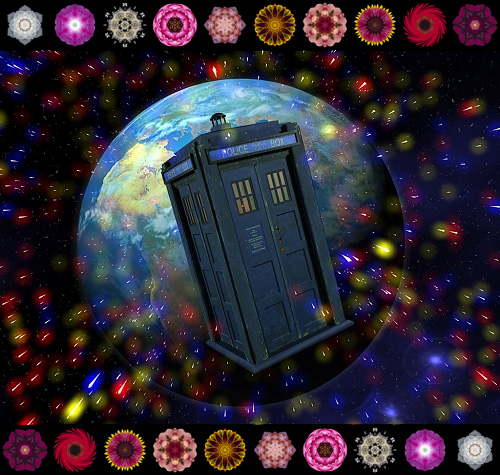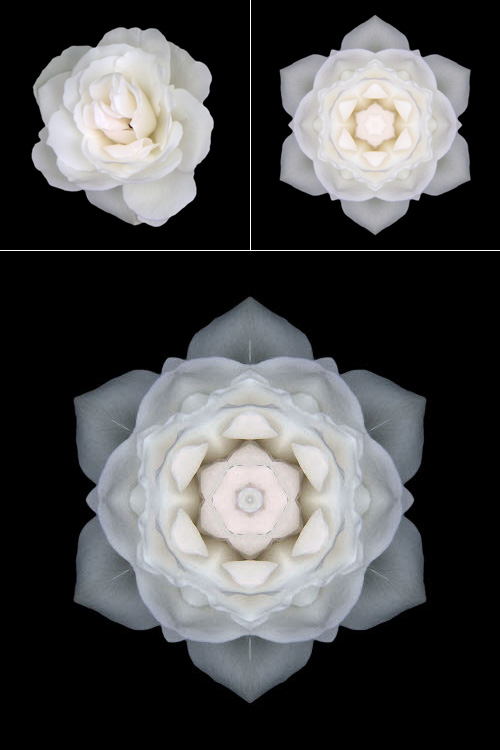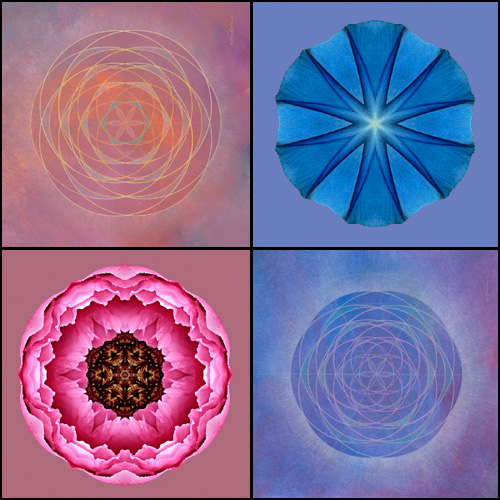
You yourself, as much as anyone in the entire universe, deserve your love and affections.
– Buddha
I am large, I contain multitudes.
– Walt Whitman
My work with mandalas has been, in itself, helpful in activating an inner healer and in retrieving previously buried parts of myself, but it has also been part of a more general effort toward self-healing I have been engaged in for 25 years. This pursuit has guided me from a place of narrowness and injury to my current, more open state. Through creative, meditative and psychotherapeutic endeavors, I have learned to access the still-injured parts of myself, to bring to them my most compassionate self, and to relieve their pain. Accessing these previously shielded parts has, in turn, released a store of creativity and aliveness that was also concealed within my defenses.
The process began in an unlikely place: not in a house of worship or an artist’s studio but with a small black-and-white television and a British TV show originally designed for children.
One day in 1982, exhausted from my day’s work as a technical writer, I turned on the TV. On the PBS channel was an episode of “Dr. Who.” Too worn out to do much else, I watched it.
It was the first of many I watched. Dr. Who, who soon became a regular in my house, is a time traveler. More accurately, he is a Timelord. He travels throughout time and space in a chameleon-like device called a Tardis (permanently stuck in the shape of a London police call booth), often meddling in things he shouldn’t tamper with, but always somehow making right what might have gone very, very wrong.
One episodes, in particular, resonated strongly with me. In it, Dr. Who and his lady companion notice that there is a glitch in time. For a few seconds, events repeat themselves exactly, a cosmic deja-vu. Dr. Who eventually traces the source of this glitch to an alien being who, he ultimately learns, first came to earth four billion years ago, when our planet was little more than a rock bathed in a soup of primeval matter. He had landed to repair his vessel, which had been damaged in battle. The landing, however, had destroyed his atmospheric thrusters, and he could not lift off from the planet’s surface. Impulsively, against the warnings of his commanding officers, he gambled on a direct switch to warp drive. The effect was cataclysmic. His ship exploded, releasing a massive amount of energy. He, however, was not destroyed. Instead, because he was already in a space/time warp, found himself scattered throughout Earth’s history. Because all of his fragmented selves were actually versions of one being, they were able to communicate over time, albeit with great effort. When Dr. Who encountered them, they had cooperated in an unthinkable task: to create a device to turn back time itself, retrieving and reuniting his fragments, and ultimately enabling his restored self to reverse his hasty decision, wait for rescue, an continue with his four-billion-year-old mission.
Of course, Dr. Who ultimately thwarts the alien, whose initial blast was the energy that created the first spark of life on this planet, and then goes on to his next adventure. The episode, however, stayed with me. I wanted to reach out to all my scattered selves and, together, turn back the clock and undo the damage done to me in childhood.
Nearly twenty years later, I attended a five-day retreat near Boston held by the Buddhist monk Thich Nhat Hanh. The experience of being in a temporary community of 900 monks, retreatants, and Thich Nhat Hanh himself was a powerful one, but equally transformative was a comment by one of the retreatants. She hugged me, then said, “David, when you feel that you need something from someone else, try giving it to yourself first.”
I knew in that moment that what she was saying was exactly right, and that doing this would be a great boon to me, but I had no idea how to do it.
Shortly after the retreat, I began making Flower Mandalas. In this activity, I was able to learn what it was like to give to myself something I typically sought from others. Early in this process, I was preoccupied with regaining the child self I’d come, in therapy, to recognize I’d been cut off from for most of my life. I imagined this little boy to be locked in a thick, titanium shell he had built to protect himself from harm, but which now shielded him — and me — from fully experiencing what it was like to be alive. I sensed great pain in there, but I could not feel it. I sensed, as well, the potential for great joy, but it was unavailable to me.
As time has passed and I have continued to use art, meditation, and psychotherapeutic techniques and relationships, and especially since I have become a therapist myself, I’ve begun to understand that inside me was not only the injured little boy, but also a troubled adolescent, an angry teenager, a fiery and adventurous college student, a twenty-something young man adrift, and numerous other incarnations since and in-between. They are like Russian dolls, each of them containing their younger selves, all of them, at their core, this elusive wounded child who held, as well, my deepest joy. To reach that boy and free him from his self-imposed prison, it was not necessary to work my way through all the nested selves. I could, I realized, access whichever one was handy and give him the benefit of my love and affections. Healing any of these injured selves would help all those who had come before.
Now, when I put my attention to connecting any of my younger selves and my inner healer, the effect is an almost instantaneous sense of being soothed and loved. Regardless of what happens in my life, I have a trusted companion I can count on, 24/7, to attend to my deepest needs. The effect is much like that of Dr. Who: to return to an earlier time and set right what once went wrong, and in that process, to restore to wholeness what had been lacking. And I needn’t reverse four billion years of history to accomplish it!
More anon
– David
Discussion:
Time Travel and Self-Healing
Art, Healing, and Transformation group
Flower Mandalas Project group
© 2007, David J. Bookbinder

